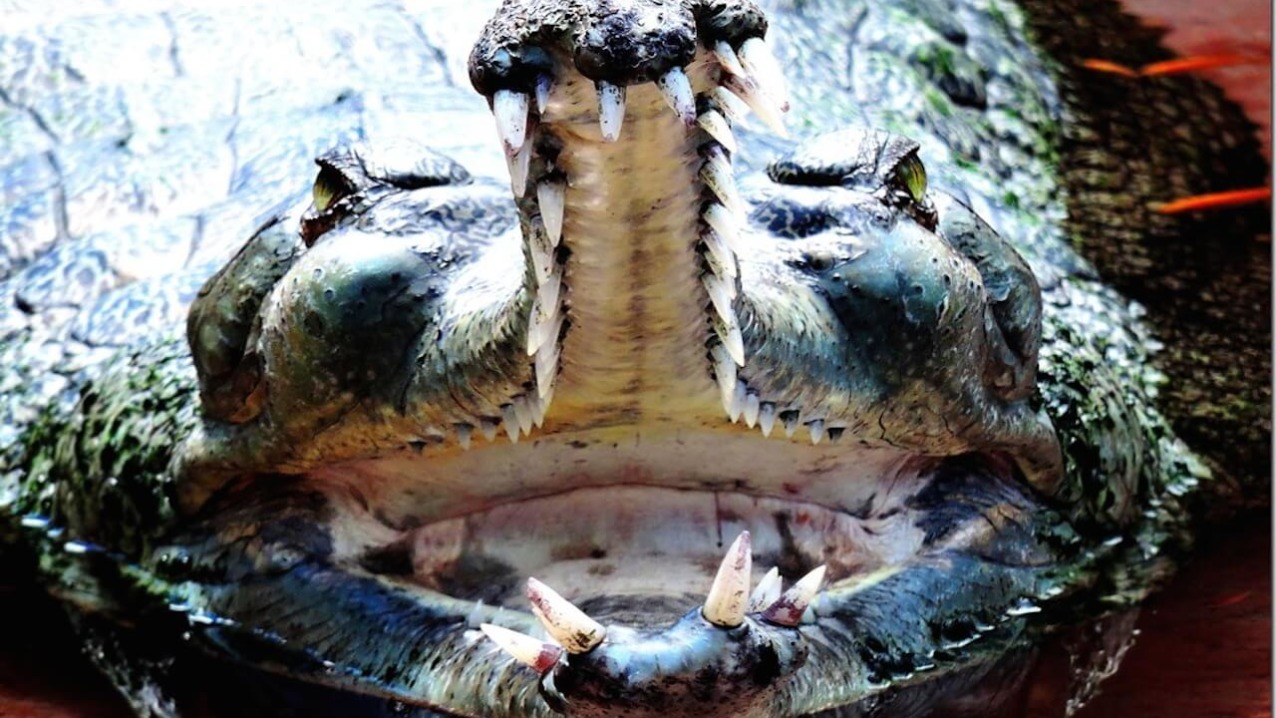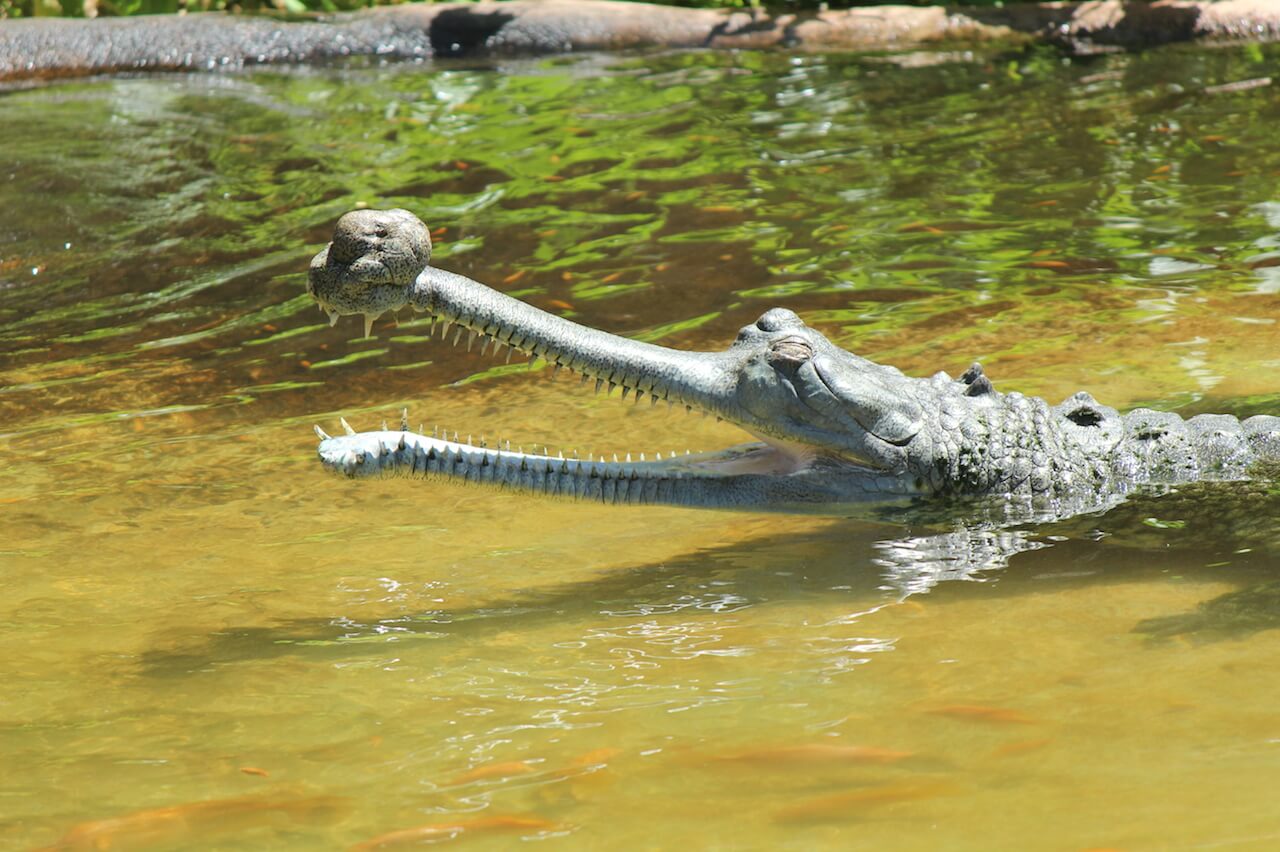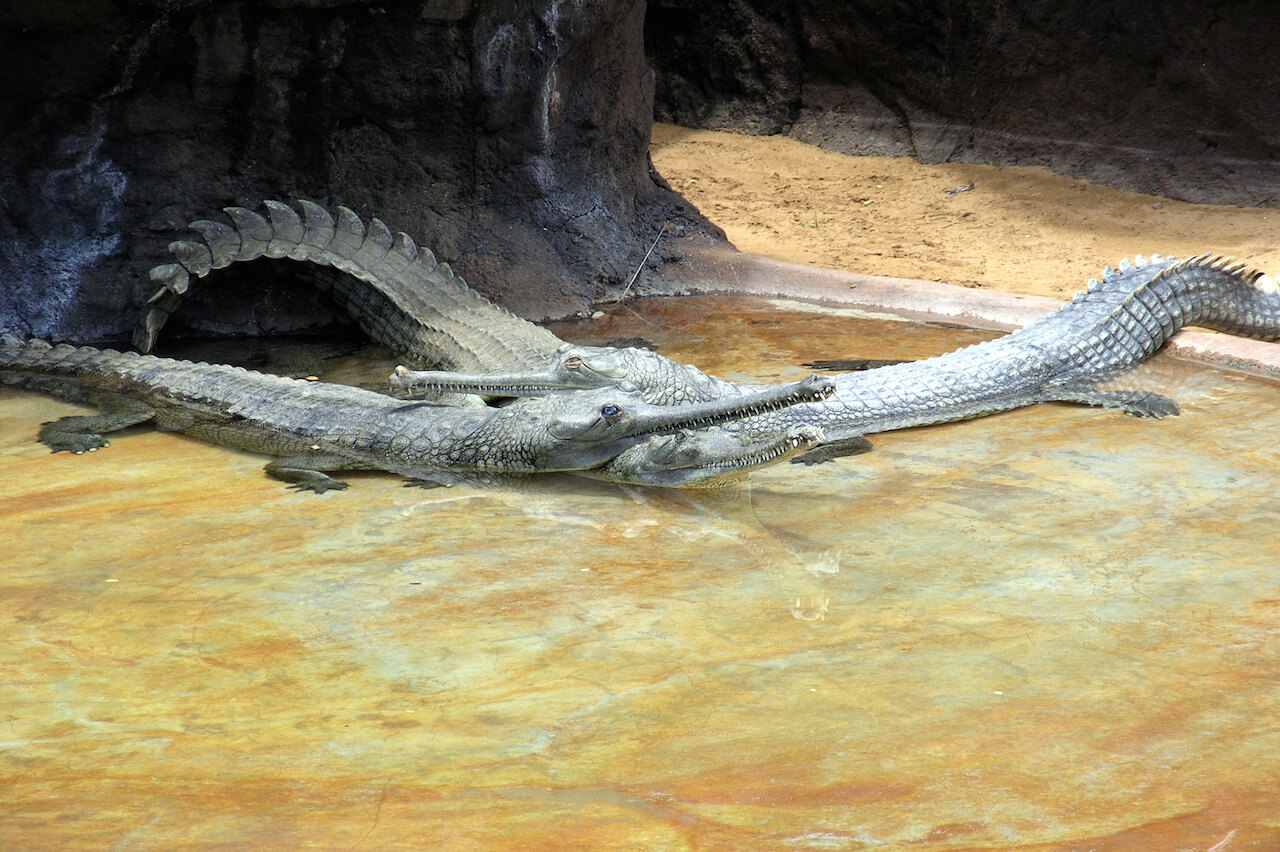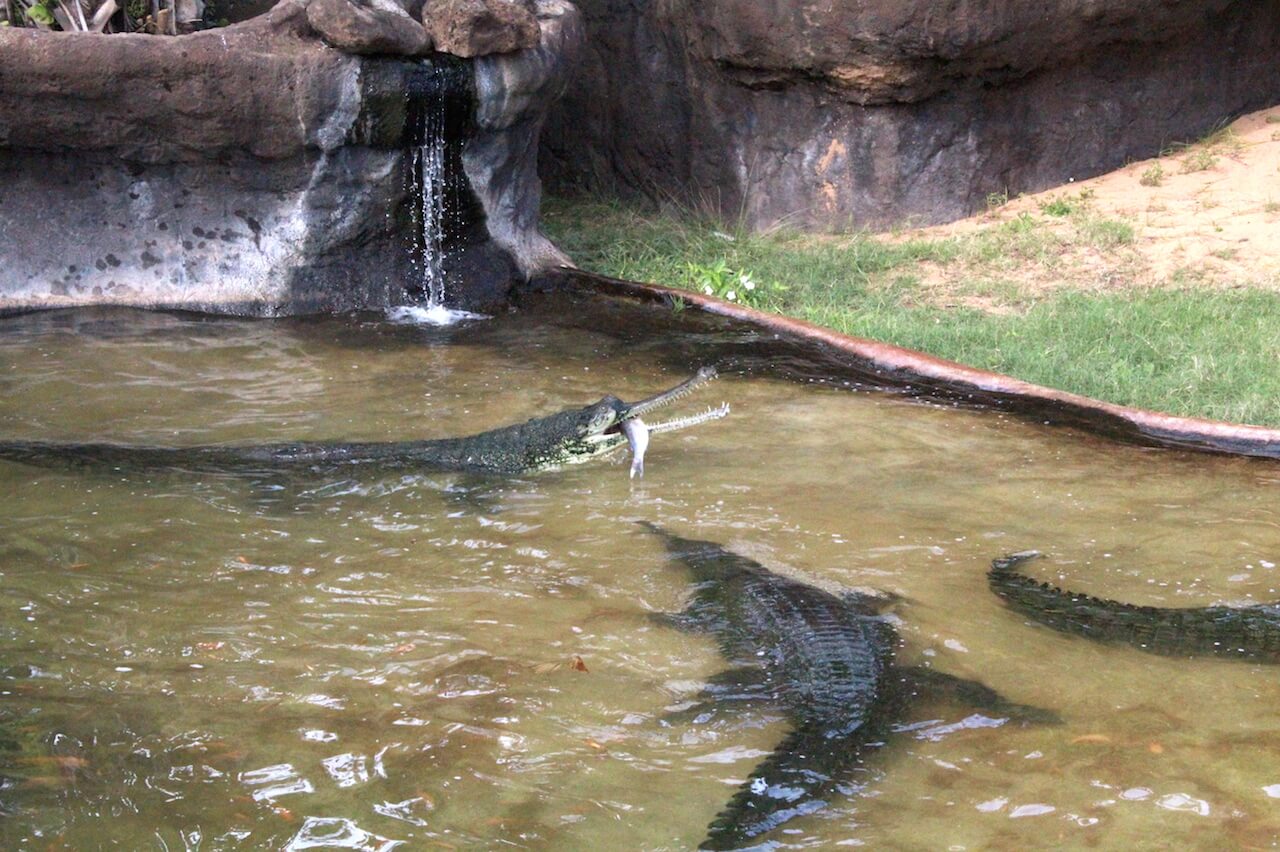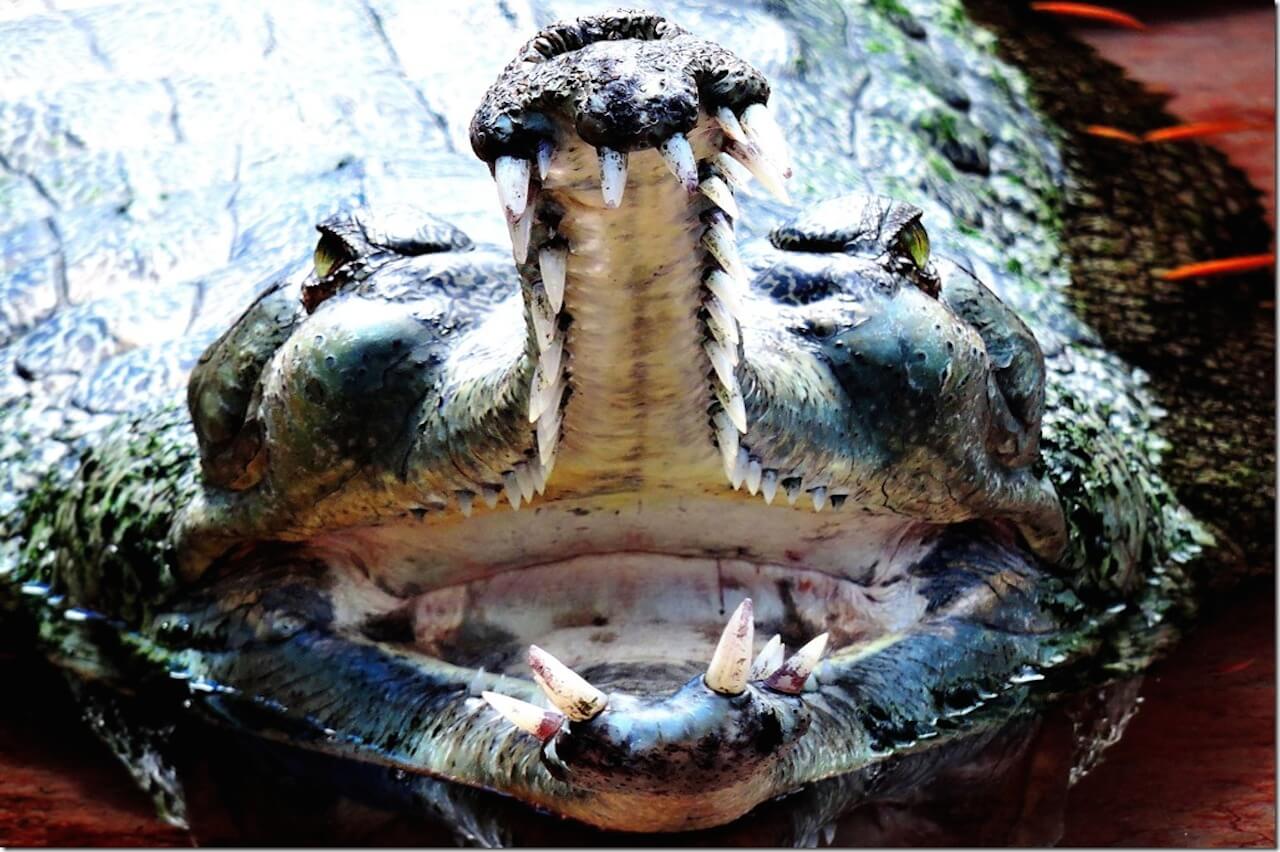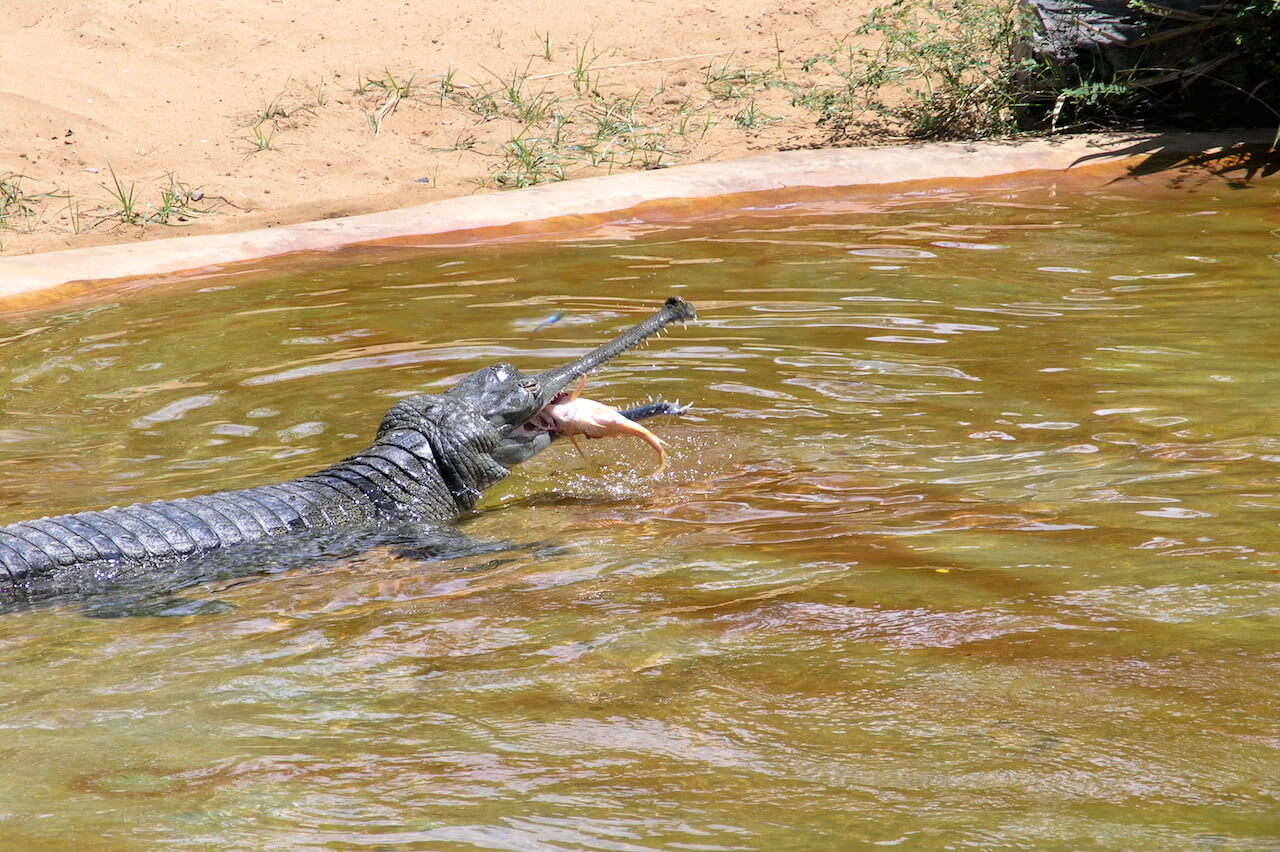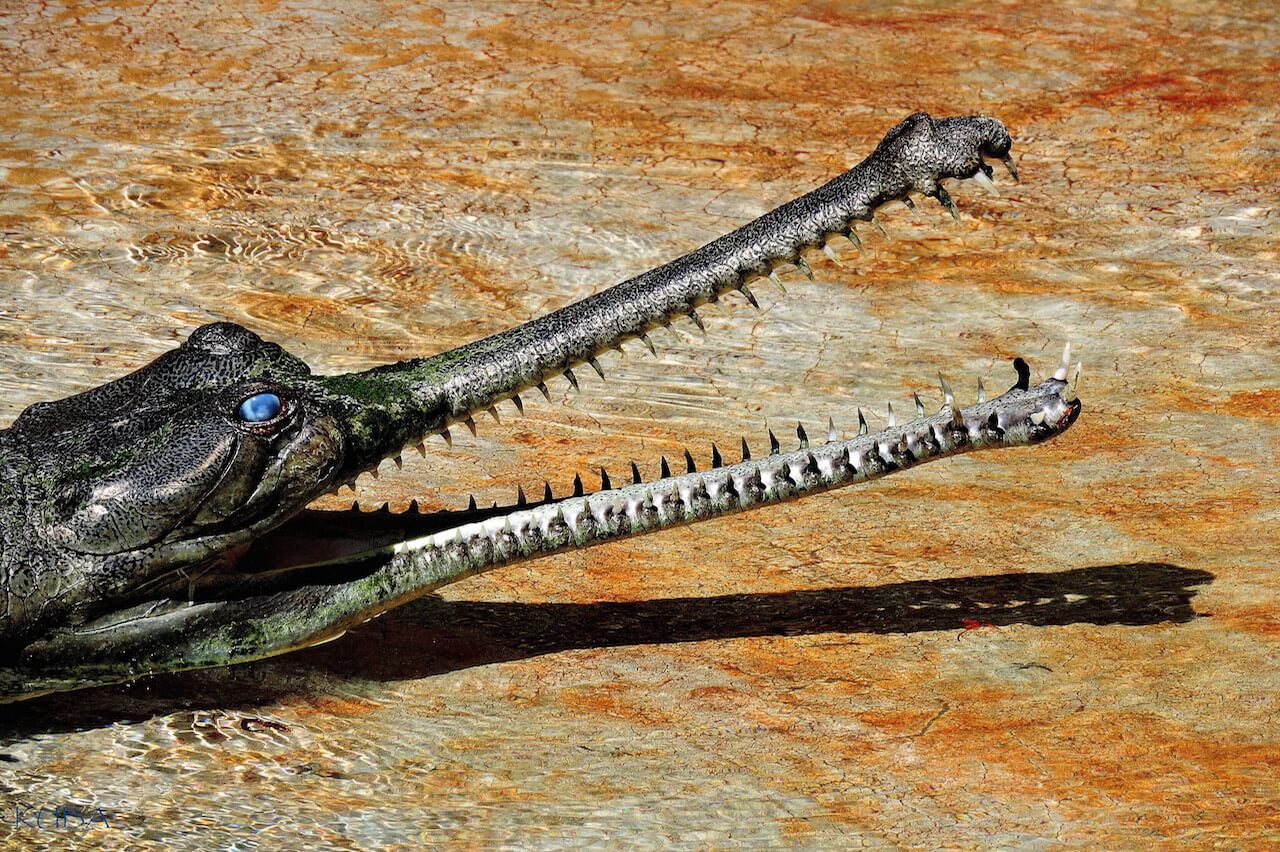gavialis gangeticus
Gharial
About Me
Scientific Name: Gavialis gangeticus
Description
Gharials are found in Himalayan-fed river systems: Indus, Ganges, Brahmaputra rivers, to the coast of Burma, Northern and eastern India, Nepal, Bangladesh and Pakistan. The Gharia is uniformly dark olive-gray with a pale yellow belly. Gharials have an extremely elongated snout. The teeth are needle-like and the eyes green frosted with back. A large male can reach 23 feet in length, and a female 15 feet.
Fun Facts
- The well-developed, laterally flattened tail and webbed rear feet provide tremendous maneuverability in deepwater habitat.
- The Gharial is also known as the fish-eating crocodile.
- Kingdom: Animalia
- Phylum: Chordata
- Class: Reptilia
- Order: Crocodilia
The Gharial, Gavialis gangeticus is uniformly dark olive-gray with a pale yellow belly. Juveniles have dark spots and cross bands against a light background. Gharials have an extremely elongated snout. The teeth are needle-like and the eyes green frosted with back. A large male can reach 23 feet in length, and a female 15 feet.
Gharials, being the most aquatic of all crocodilians, are awkward out of water mainly due to their short stumpy legs.
The adult male develops a pot-like structure on the end of the snout, giving the gharial its name (from “ghara” — Hindi for earthen pot). This nose knob is used to produce a bussing noise that repels rival males and serves as an audible warning system.
Gharials are found in Himalayan-fed river systems: Indus, Ganges, Brahmaputra rivers, to the coast of Burma, Northern and eastern India, Nepal, Bangladesh and Pakistan.
They favor deep, fast-flowing rivers with relatively clear water, high banks, deep pools, and sandbanks for basking and nesting. They rarely venture more than a few feet away from the water.
Gharials are mainly fish eater, although they also take shrimps, crabs, frogs, snakes, birds and small mammals. The flattened snout is very efficient when sweeping and snapping sideways in the water at prey such as fish.
Gharials live in harems of 4 to 6 females to one male. Males become sexually mature at 10 years, females at 11. Mating usually takes place in November or December.
In March, the female builds several nests, flask-shaped holes, on sandbanks above the flood level. In April, the female lays 15 to 60 eggs in the nests and covers them with soil. Eggs are about 3 1/2 inches long, with hard, calcified shells. The female stays close to the nests, driving away predators. Incubation is 60 to 80 days.
In July, the hatchlings poke a hole in the eggshell with their snouts. The female excavates the nest at hatching time and may carry hatchlings to water in her gular pouch. Hatchlings are 16 inches long.
Gharials have been pushed to the brink of extinction. In 1974, the government of India and the United nations Food and Agriculture Organization conducted a survey of its population in India. It was estimated that no more than 50 to 60 surviving adults.
Although the gharial is still listed as endangered, effective conservation measures have now made the gharial’s future more promising. Massive sanctuaries have been created and active management involves the collection of eggs for hatchery incubation.
Other Reptiles
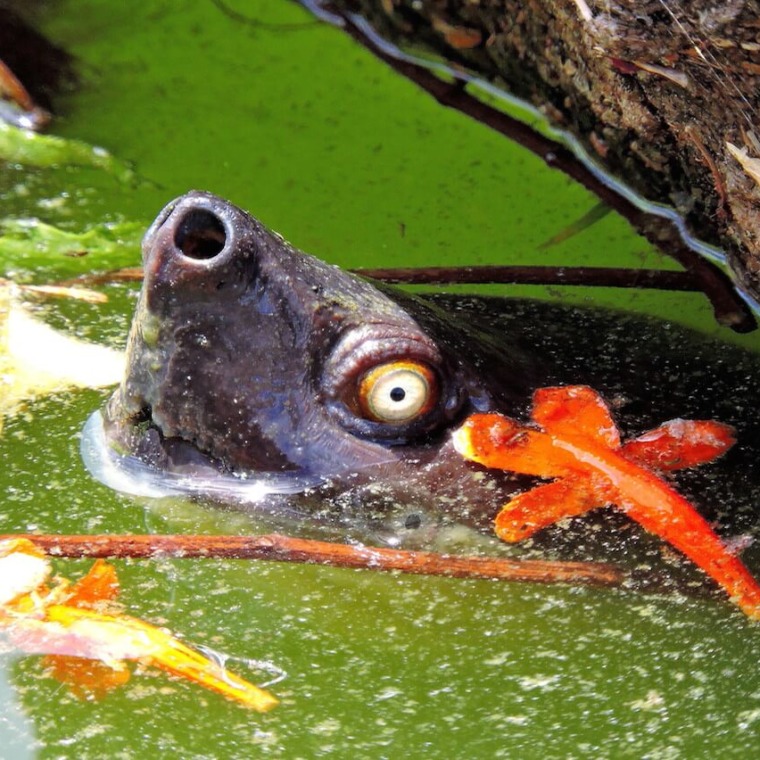
The last populations of Tutong are found in India, Indonesia, Bangaladesh, and Malaysia. It is extinct in its former range of Thailand, Myanmar, Vietnam, and Singapore.
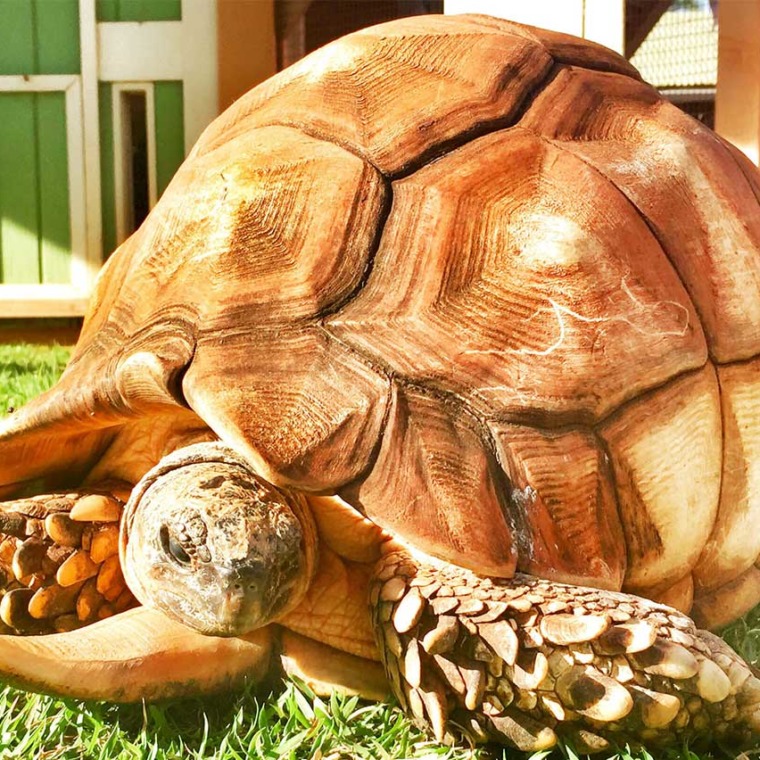
Inactive during cool, dry season (May to October). Does not dig burrows. Seeks protection in thickets and seeks shelter in surface litter. Forages during morning and late afternoon.
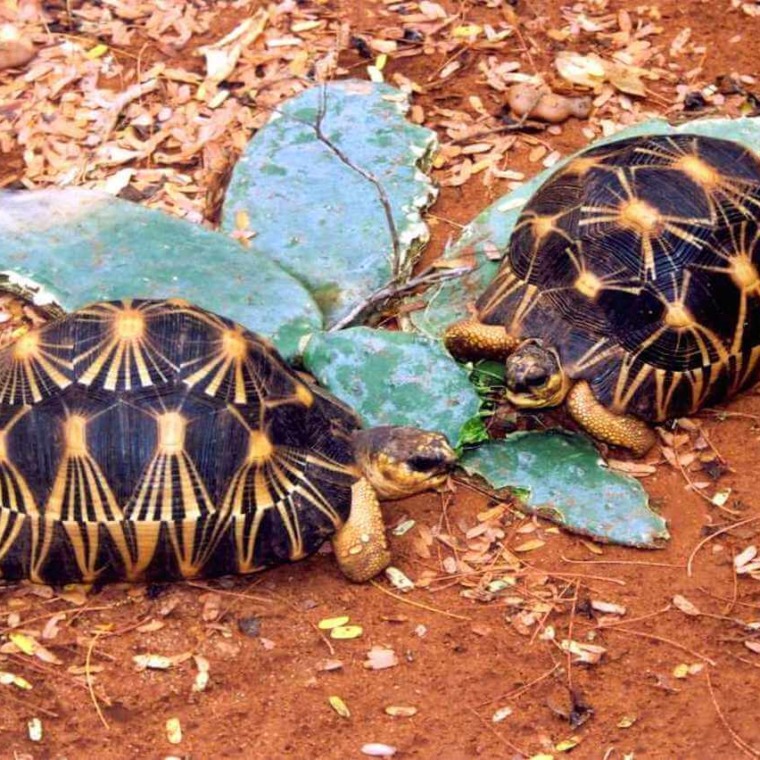
In the wild, this reptile is relegated to the extreme south and south-western portions of Madagascar. In recent times, they have also been introduced to the nearby island of Reunion.
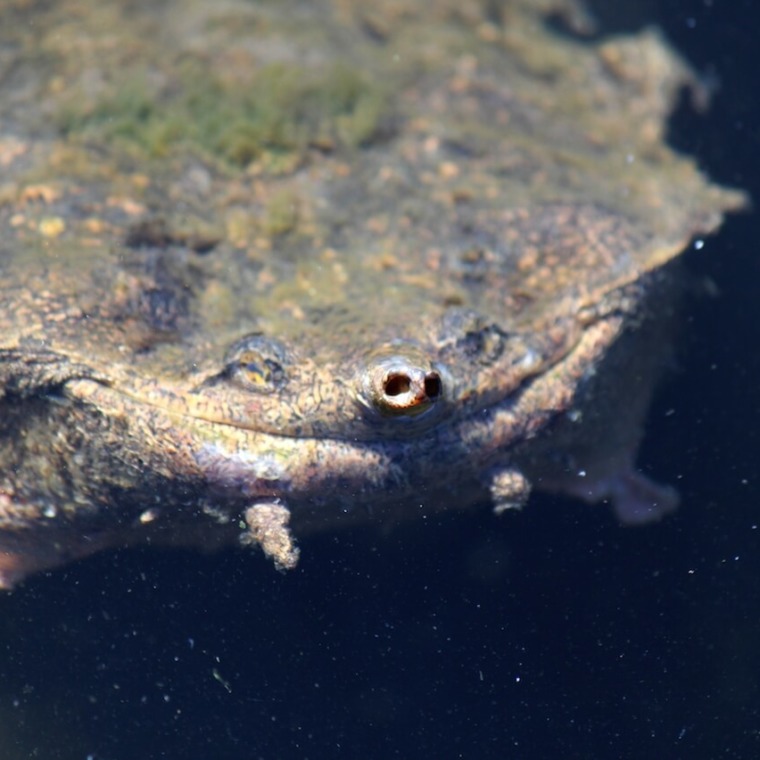
This species inhabits stagnant pools in Brazil and the Guianas and also in parts of the Amazon River and in Trinidad.
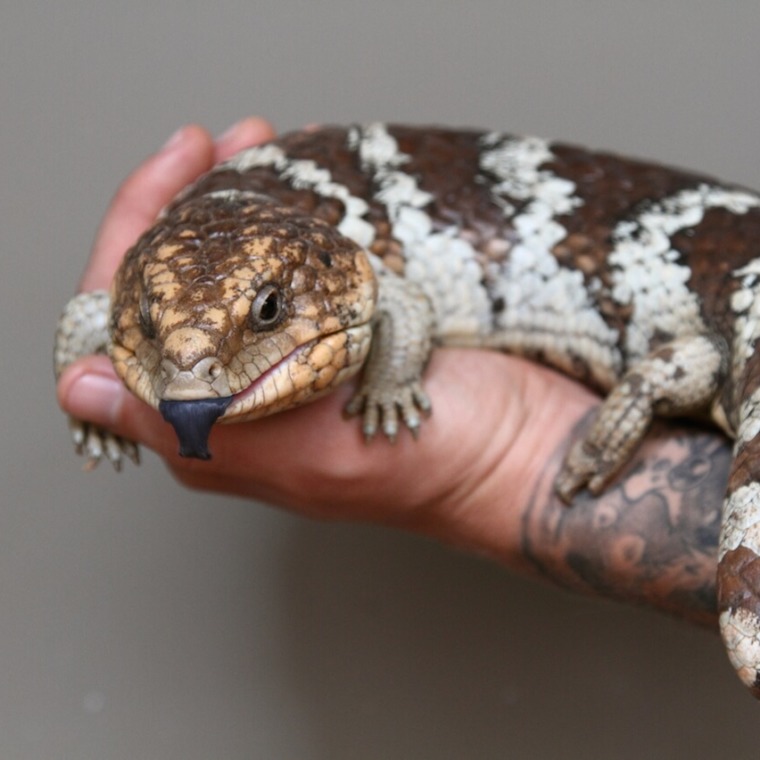
The Shingleback skink is found in southern and western Australia, in desert grassland areas or sandy dunes. Skinks are shy and secretive and seldom stray far from their shelter.


